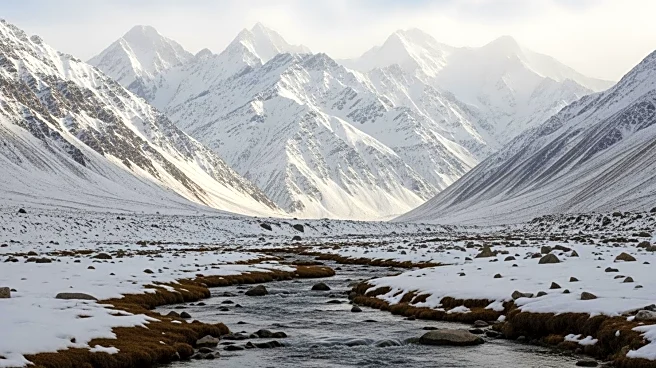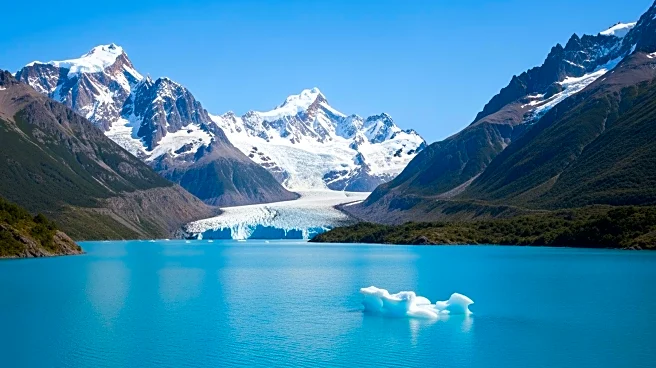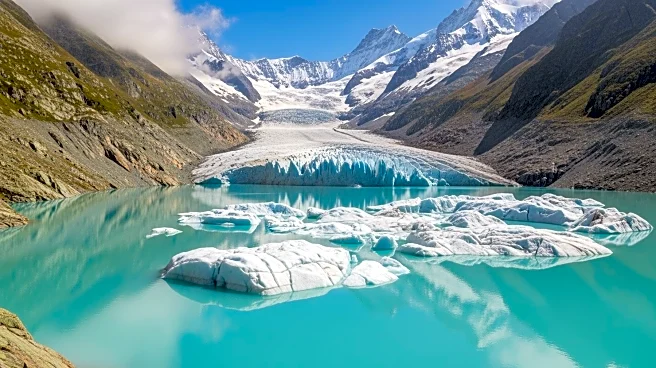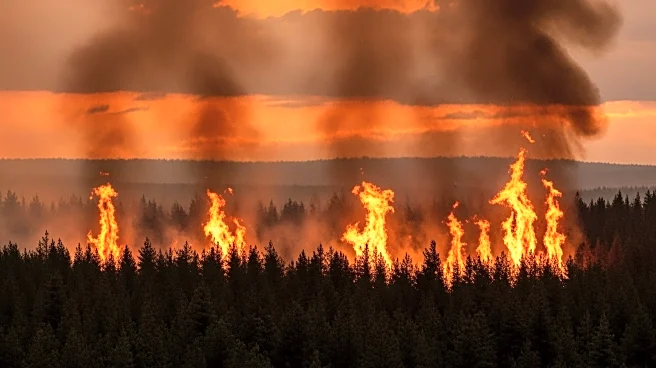What's Happening?
A recent study has revealed intensified occurrences of snow droughts in the Hindu Kush Himalayas (HKH), linked to changes in snow cover dynamics. The study utilized the HMASR SWEI product to analyze snow drought events, finding that significant portions
of the HKH land cover are affected by these droughts. The research identified specific basins, such as AD, NW, IN, MK, and SA, as experiencing higher frequencies of snow droughts, particularly in years like 2008, 2010, 2011, and 2015-2017. The study also examined the relationship between snow cover anomalies and drought occurrences, highlighting the impact of declining snow cover on regional hydrology and climate change.
Why It's Important?
The findings underscore the critical role of snow cover in regional water resources and climate dynamics. Snow droughts can significantly impact agriculture, hydropower, and drinking water supplies for communities relying on snowmelt. The study's insights into snow cover anomalies and drought patterns can inform policy decisions and adaptation strategies to mitigate the effects of climate change in the HKH region. Understanding these dynamics is crucial for managing water resources and ensuring the sustainability of local economies dependent on snowmelt.
What's Next?
Future research may focus on identifying the drivers of snow droughts, such as temperature increases and precipitation deficits, to develop more accurate predictive models. Policymakers and environmental organizations might use these findings to implement strategies aimed at reducing the vulnerability of communities to snow droughts. Additionally, efforts to monitor and manage snow cover dynamics could be intensified to better understand and respond to the impacts of climate change in the region.
Beyond the Headlines
The study highlights the broader implications of snow droughts on global climate patterns, as changes in snow cover can affect atmospheric conditions and hydrological cycles. The research also points to the need for international cooperation in addressing climate change impacts, as the HKH region's snowmelt contributes to major river systems affecting multiple countries. This underscores the importance of cross-border collaboration in developing sustainable water management practices.














